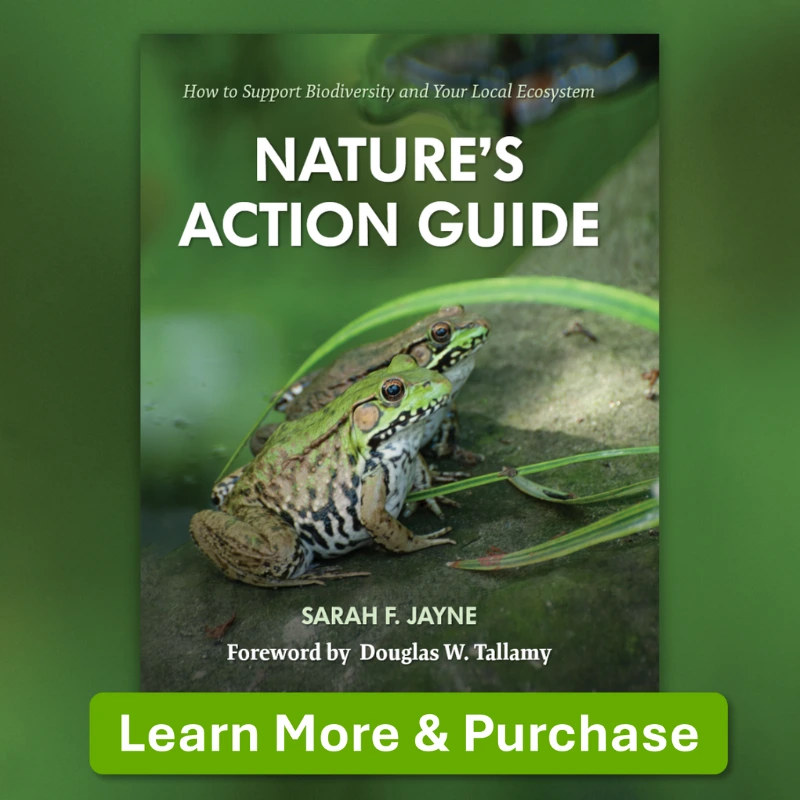Get Started Planting Native
JUMP TO A TOPIC: Reasons Why | Take Action Appropriate for You
GET STARTED GUIDES: Get Started | Shrink Your Lawn | Remove Invasive Plants | Make a Home for Wildlife | Design a Native Landscape
Welcome Nature Where You Live, Work, and Play!
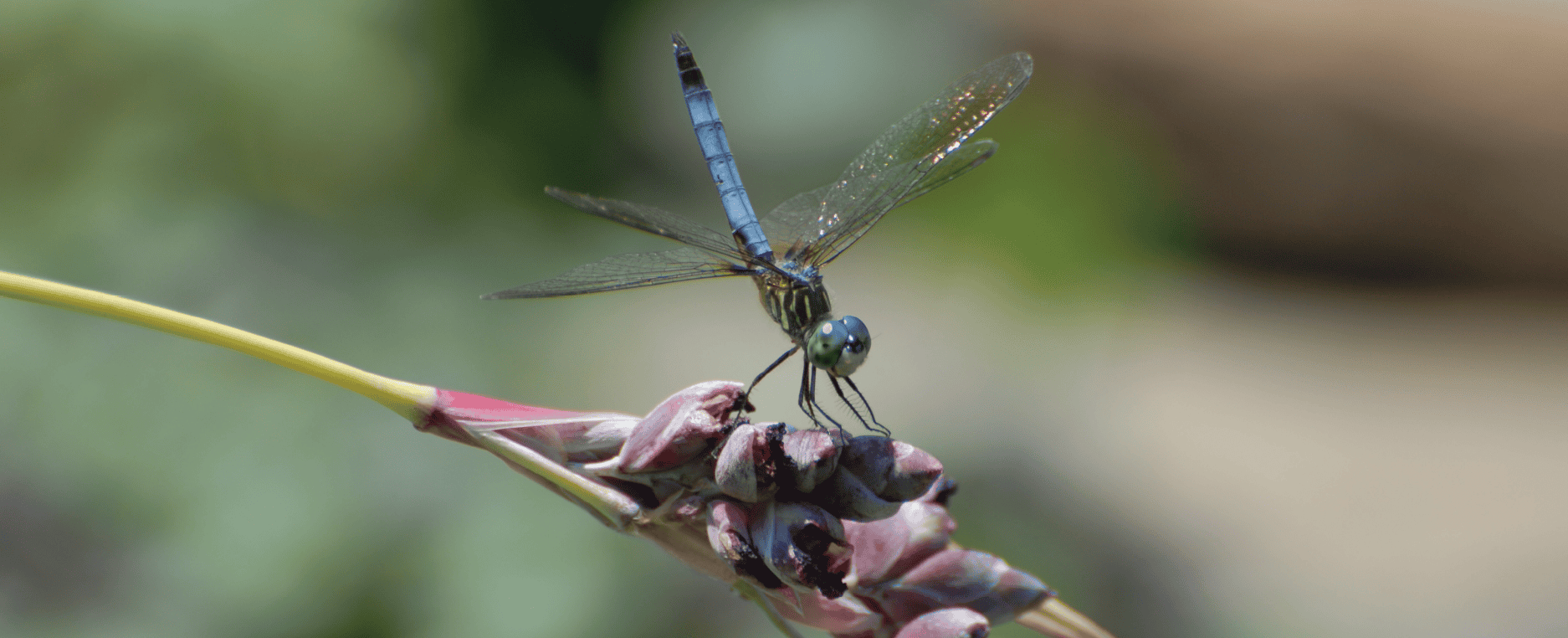
Reasons to Plant Native
Helping our landscapes to provide essential ecological services
To sustain life on earth, our landscapes must provide essential ecological services. These actions will help our landscapes provide these services in the following specific ways:
Support Wildlife Food Webs
- Planting dense layers of native plants, especially keystone plants, to provide food, shelter, and reproduction sites for wildlife
- Shrinking the lawn to make space for native plantings and to minimize the habitat disruption and destruction caused by mowing and edging
- Removing invasive plants that outcompete native plants and removing introduced plants that take up critical space
- Protecting wildlife by turning off lights, marking glass to prevent bird strikes, and avoiding toxins that kill wildlife or interfere with their reproduction
- Allowing native plants to set seed to increase biodiversity and provide food for wildlife
- Protecting pupation and nesting sites
Support Pollinators
- Planting for an all-season sequence of blooms
- Planting the specific host plants needed by native pollen specialist bees, wasps, caterpillars, and other specialists
- Leaving pithy and hollow stems to provide nesting sites for stem-nesting native bees and deadwood for cavity-nesting bees
- Leaving areas of bare ground for ground-nesting bees
- Monitoring blooms and pausing mowing to allow pollinators and other insects to feed
- Using nontoxic lawn and yard maintenance methods that don't poison our pollinators
- Opposing community-wide mosquito spraying
- Not purchasing plants treated with neonicotinoids and other pesticides
Protect and Manage the Watershed
- Replacing lawn with dense layers of plants, along with rain gardens where needed, to help keep water on the property
- Avoiding the use of fertilizer and using nontoxic pest and weed control methods to prevent toxins from entering the watershed
- Reducing mowing to reduce the volume of exhaust particles infiltrating the watershed
- Properly disposing of home and garden chemicals, pet poop, and other toxins to prevent contamination of the watershed
- Mulching new plantings with homegrown materials to conserve water
- Changing water habits to reduce water usage
Build Soil and Sequester Carbon
- Leaving stumps, snags, and branches on site to store carbon
- Leaving leaf litter to reduce runoff and retain soil moisture
- Planting dense layers of plants to build and protect soil structure and prevent erosion
- Reducing the volume of emissions by leaving leaf litter instead of using power leaf blowers
- Choosing nontoxic yard maintenance methods to prevent toxins from building up in the soil
- Reducing energy usage and carbon emissions by reducing mowing and turning off the lights
- Sequestering and storing carbon by planting trees and other plants—lots of trees and plants!
Getting Started - It's Worth It!
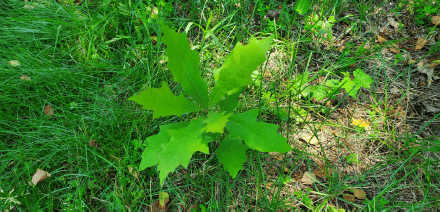
“Every oak started out as a couple of nuts
who stood their ground.”
Henry David Thoreau
Converting a huge expanse of lawn bereft of trees into a wildlife habitat may simply look like an impossible task. But here's the thing, once you start transitioning an area to wildlife habitat, Mother Nature steps in and helps you! A tiny speck of a seed produces a mound of blooms covered with pollinators, a jay plants an oak for you, a bare spot in the soil becomes home to native ground-nesting (non-stinging) bees. Time passes, and before you know it, there are more flowers, trees have tripled or quadrupled in height, and the landscape is filled with movement and birdsong. This really does happen!
Before and After Examples
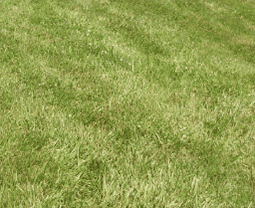
BEFORE
This extensive lawn offered no benefits to wildlife.
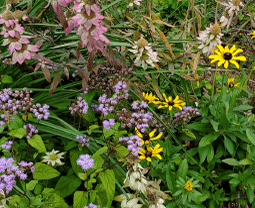
8 MONTHS LATER
In late fall, an area of this lawn was blocked with cardboard and wood chips, then planted in spring. Pollinators (and people) enjoyed a lovely display of blooms all summer.
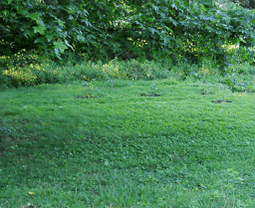
BEFORE
A watershed area was covered in non-native vegetation.

2 YEARS LATER
A mix of non-native weedy growth was replaced with Joe-Pye weed (Eutrochium) and cup plant (Silphium perfoliatum). This small valley now teems with life.
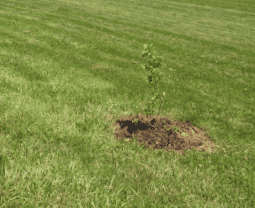
BEFORE
A large expanse of front lawn was an ecological dead space.
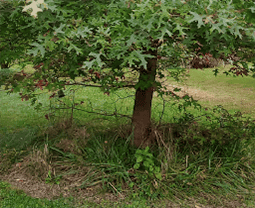
5 YEARS LATER
Once planted, the oak grew exponentially each year. All it took was digging a hole, protecting the sapling from deer, and faith that one day it would be a tree—and now it is!
Taking Action at a Level That Is Appropriate for You
Some of the actions urgently needed to support wildlife can be tough and sometimes emotionally challenging. For example, you may discover that a tree that is finally old enough to provide fruit or a plant that a treasured friend gave you is an invasive species. You may be accustomed to lighting up your home and landscape at night, or you may have a broad expanse of lawn that is the pride of the neighborhood. We need to take the difficult actions for nature to survive. As your wildlife habitat starts coming alive, you'll likely find that the hard decisions become easier because you'll want to see your wild visitors sticking around and thriving!
Before stepping into action, consider which level of wildlife habitat restoration fits you:
 Armchair Wildlife Habitat: Perhaps for physical or other reasons, making changes in a landscape is not an option. Or maybe having a green thumb is not your thing—there are still many actions you can take! Turning out the lights, engaging others through conversation and dialogue, supporting community efforts, and offering financial support are vital contributions.
Armchair Wildlife Habitat: Perhaps for physical or other reasons, making changes in a landscape is not an option. Or maybe having a green thumb is not your thing—there are still many actions you can take! Turning out the lights, engaging others through conversation and dialogue, supporting community efforts, and offering financial support are vital contributions.
 Landless Wildlife Habitat: No landscape of your own to make over? Even containers make a difference. Family or friends may appreciate your help converting their landscapes. Community properties offer volunteer opportunities, or perhaps your workplace would welcome a natural and beautiful landscape makeover. You might even consider becoming an ecological landscaper!
Landless Wildlife Habitat: No landscape of your own to make over? Even containers make a difference. Family or friends may appreciate your help converting their landscapes. Community properties offer volunteer opportunities, or perhaps your workplace would welcome a natural and beautiful landscape makeover. You might even consider becoming an ecological landscaper!
 Step-by-step Wildlife Habitat: You would love to convert all your property to a rich wildlife habitat right now, but your time or resources are currently limited. You may want to choose which actions are most interesting to you and feasible to do now. You can then gather the resources for other actions over time.
Step-by-step Wildlife Habitat: You would love to convert all your property to a rich wildlife habitat right now, but your time or resources are currently limited. You may want to choose which actions are most interesting to you and feasible to do now. You can then gather the resources for other actions over time.
 Gung-ho! Wildlife Habitat: You have the time, resources, and inspiration to transform your entire landscape into a thriving, natural ecosystem filled with movement and birdsong. You may be able to do every action in these articles!
Gung-ho! Wildlife Habitat: You have the time, resources, and inspiration to transform your entire landscape into a thriving, natural ecosystem filled with movement and birdsong. You may be able to do every action in these articles!
Whatever level of action feels comfortable for you, we are thrilled that you are embarking on this journey with us! Let's get going!
This content is an excerpt from Nature's Action Guide by Sarah F. Jayne, shared here with the author’s permission. All rights reserved © 2025 Sarah F. Jayne.
Get the Full Action Guide!
GET STARTED GUIDES: Get Started | Shrink Your Lawn | Remove Invasive Plants | Make a Home for Wildlife | Design a Native Landscape

